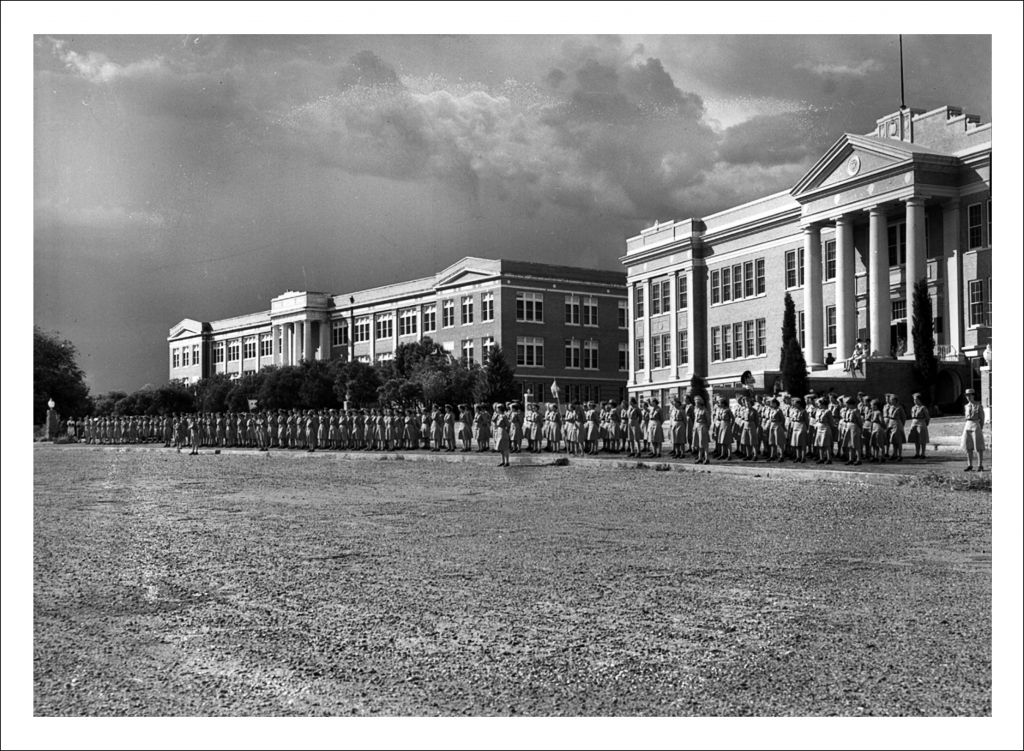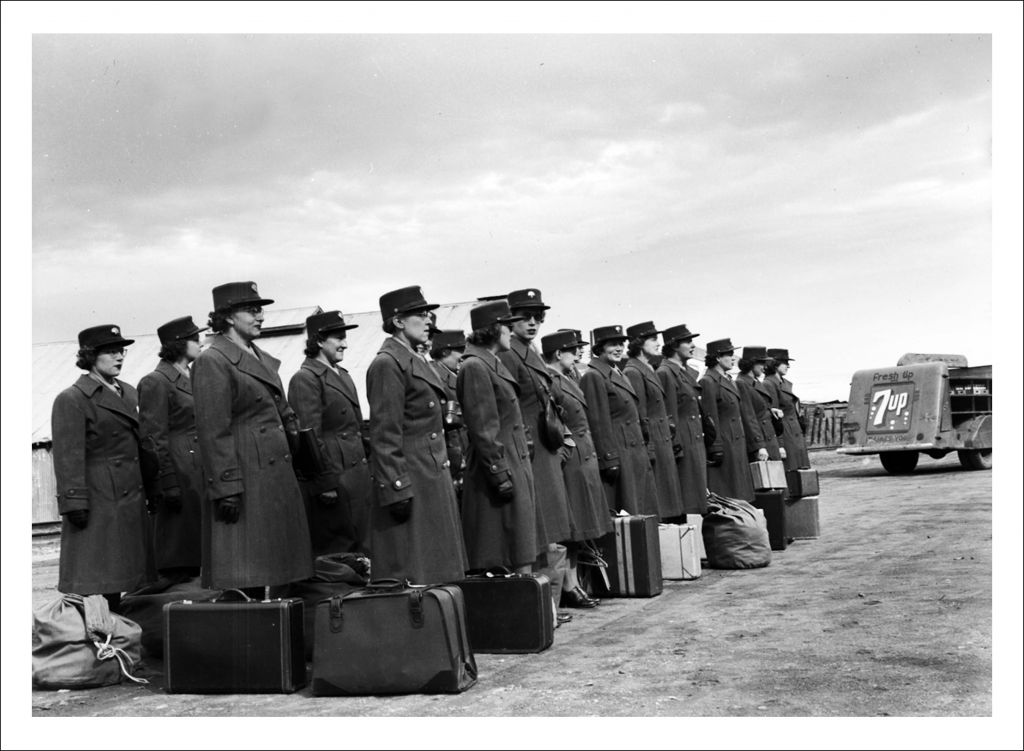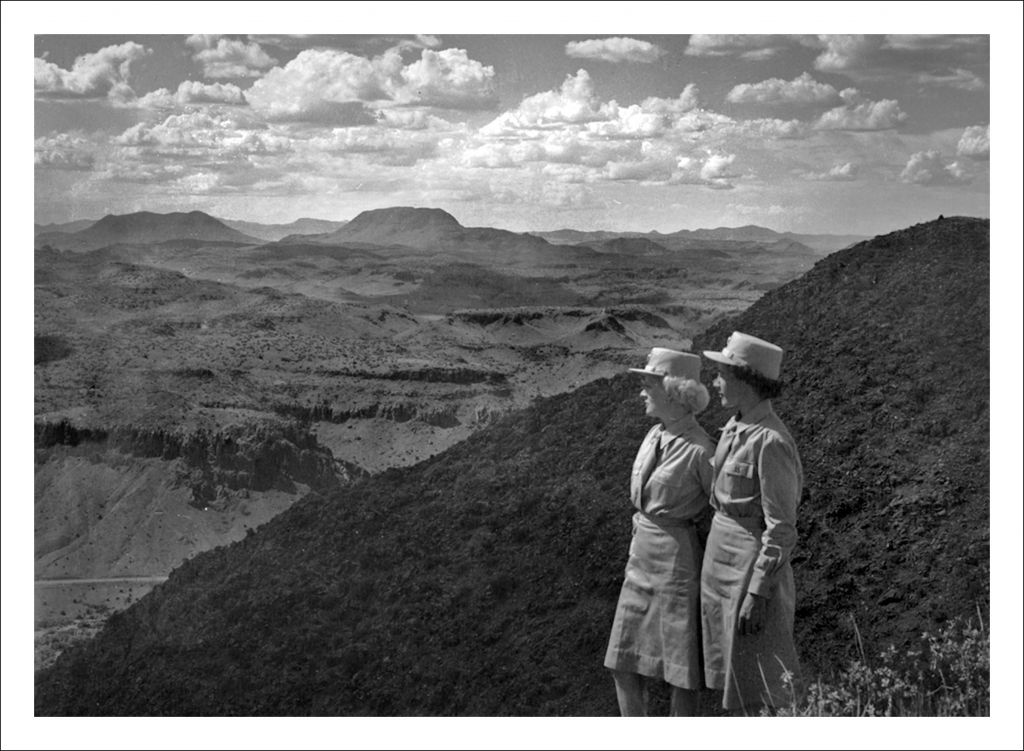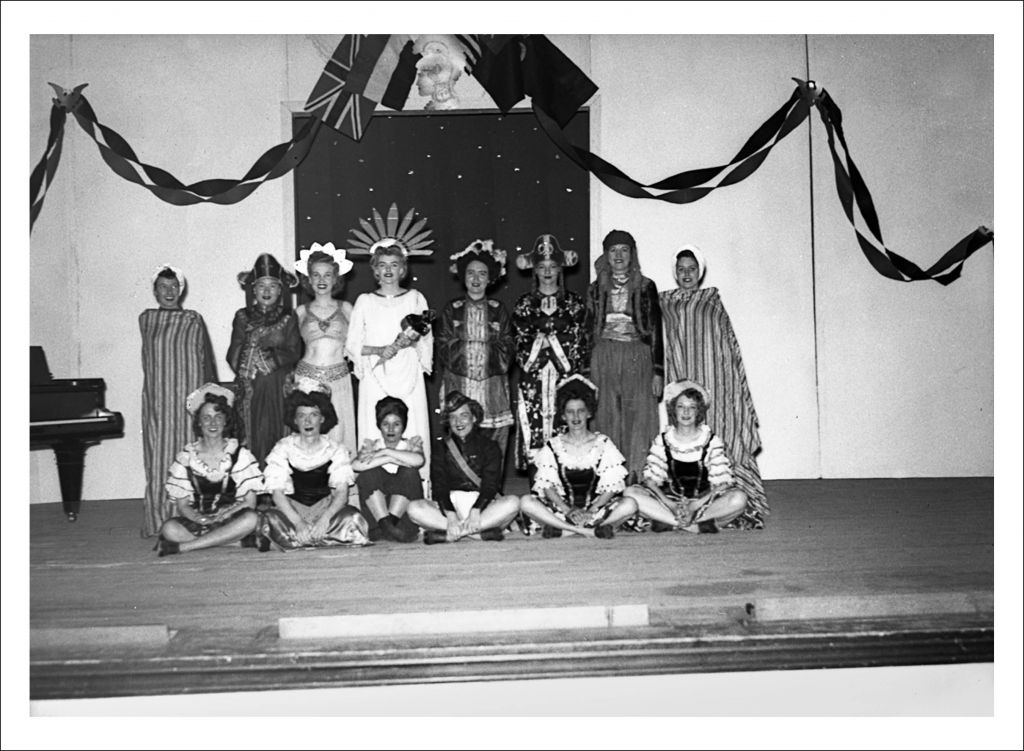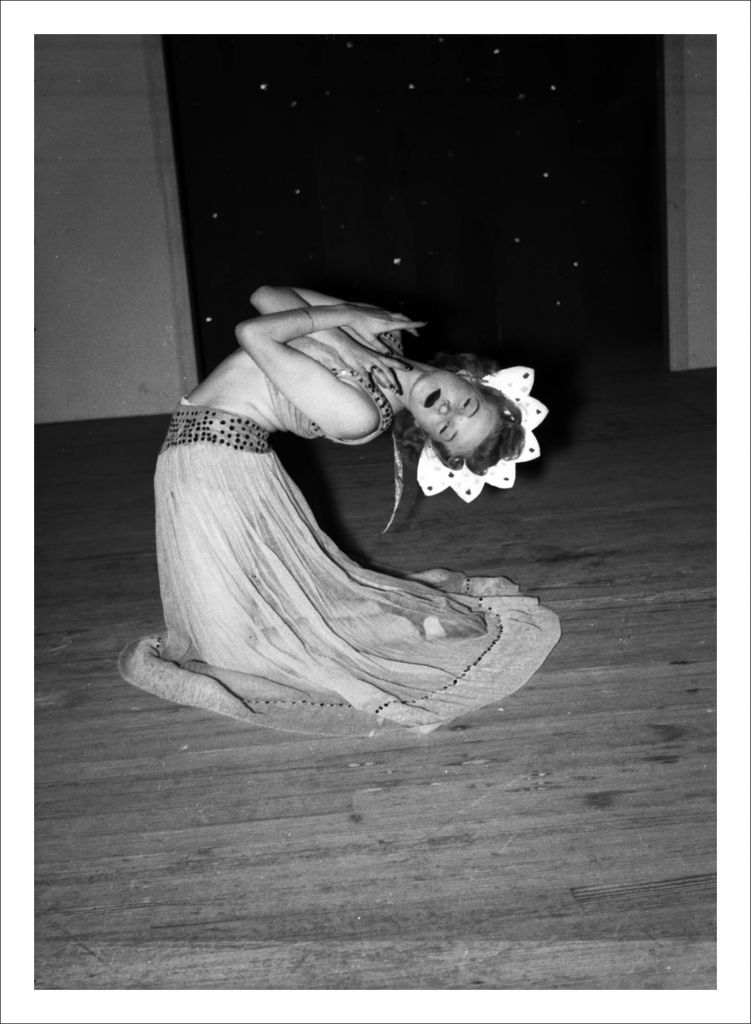The Archives of the Big Bend is celebrating Women’s History month by highlighting the WAC Army Administration Unit on campus during WWII. All images come from the Glenn Burgess Collection. Newspaper article from Sul Ross Skyline.
For more photos and information on WACs at Sul Ross see our exhibit in the windows of the Archives of the Big Bend, Wildenthal Library.
The Women’s Army Auxiliary Corps was created on May 15, 1942. After the attack on Pearl Harbor, it was deemed necessary to created a Women’s Corps in order to free up men for the front. Over 35,000 women joined that first year. On July 1, 1943, the name was changed to Women’s Army Corps, which allowed women to gain the same ranks, privileges, and benefits as men serving in the military. Women were also allowed to begin serving overseas. The first director was Oveta Culp Hobby, a prominent Texas woman. Women in the WACs were classified into three major specialties: switchboard operators, mechanics, and administrative workers. Women were trained in physical fitness and were expected to be healthy and nimble. About 150,000 women served in the WAC during WWII. They were the first women besides nurses to serve in the army. The WAC was officially disbanded in 1978 and the all-female units were integrated with male units.
Sul Ross President Dr. Horace W. Morelock viewed the installation of a WAAC unit as necessary to the continued operation of the school since enrollment was down to 143 students by 1943. After much negotiation , Morelock entered into an agreement with the U.S. government for Sul Ross to host WAAC Unit No. 7. The first class entered the academy on May 20, 1943. Approximately 600 women in 7 classes would graduate from the Sul Ross Army Administration Program, where they came immediately after basic training to spend eight weeks on campus. The WACs at Sul Ross received training in military correspondence, filing, typing, army regulations, military customs and courtesies, and “many other subjects.”
The WACs would always arrive to Alpine by train.
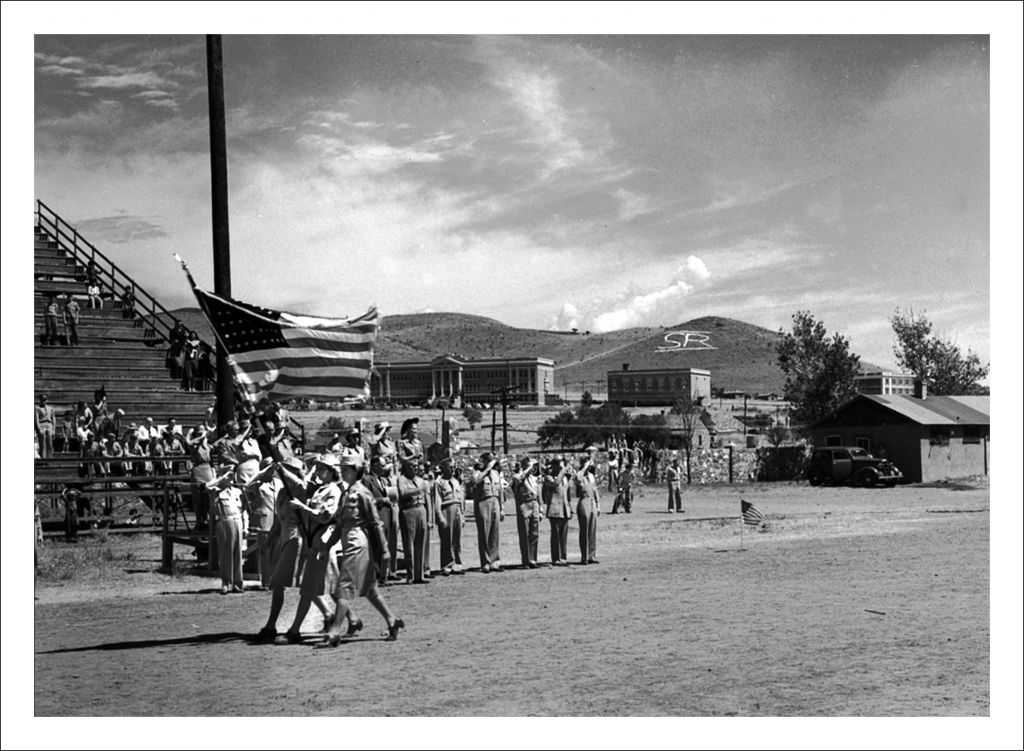 Two hours of mandatory physical training was required each week, in addition to regular drill practice.
Two hours of mandatory physical training was required each week, in addition to regular drill practice.
Sul Ross gave WAC women a sense of community and they regularly performed in theater and talent shows and participated in other extra curricular activities such as swimming, hiking, horseback riding, volleyball, and dances.
Most WACs classes performed a talent show for the Sul Ross community.
The 4th page of the Sul Ross Skyline was dedicated to the WACs and news about the war. “WACKY BITS” functioned as a gossip column while the WACs were on campus.
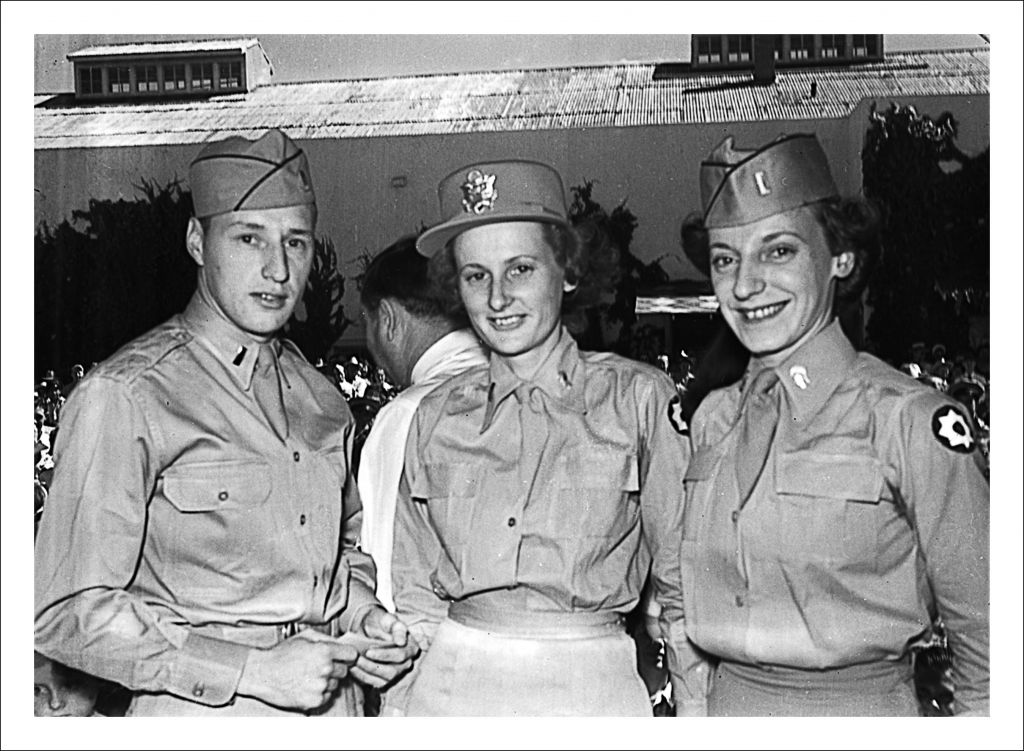 They regularly met with the men serving at Fort D.A. Russell for drills, meals, and other activities.
They regularly met with the men serving at Fort D.A. Russell for drills, meals, and other activities.
Sul Ross President Horace W. Morelock shakes hands of WAC leaders as the last class leaves Sul Ross. Staff Director Mary J. Roberts is shaking Morelock’s hand while Lieutenant Marguerite Kurtz is on her left.
The last WAC class graduated on Feb 2, 1944. Morelock was made an honorary WAC for his services to the program.

